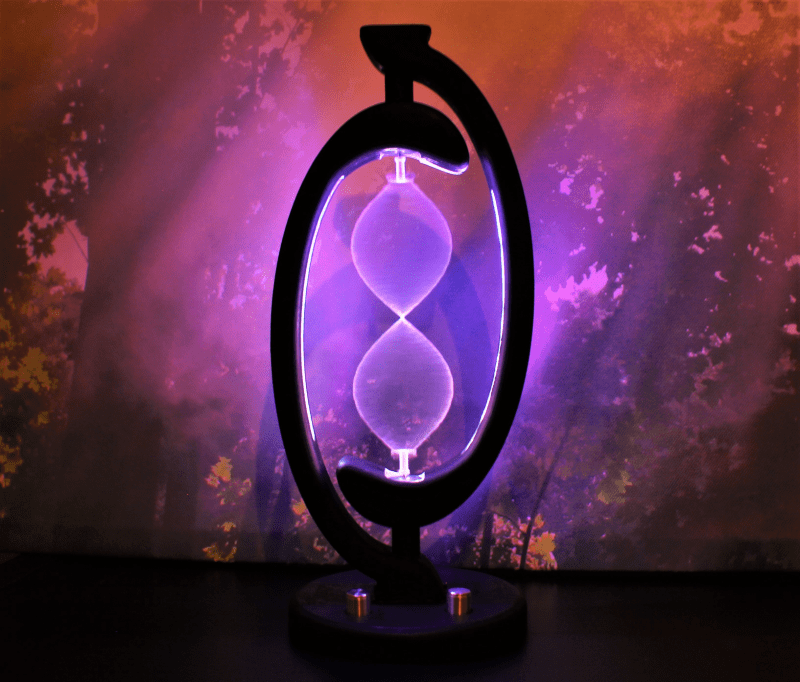This thing right here might be the coolest desk toy since Newton’s Cradle. It’s [Stephen Co]’s latest installment in a line of mesmerizing, zodiac-themed art lamps that started with the water-dancing Aquarius. All at once, it demonstrates standing waves, persistence of vision, and the stroboscopic effect. And the best part? You can stick your finger in it.
This intriguing lamp is designed to illustrate Pisces, that mythological pair of fish bound by string that represent Aphrodite and her son Eros’ escape from the clutches of Typhon. Here’s what is happening: two 5V DC motors, one running in reverse, are rotating a string at high speeds. The strobing LEDs turn the string into an array of optical illusions depending on the strobing rate, which is controlled with a potentiometer. A second pot sweeps through eleven preset patterns that vary the colors and visual effect. And of course, poking the string will cause interesting interruptions.
The stroboscopic effect hinges on the choice of LED. Those old standby 2812s don’t have a high enough max refresh rate, so [Stephen] sprung for APA102Cs, aka DotStars. Everything is controlled with an Arduino Nano clone. [Stephen] has an active Kickstarter campaign going for Pisces, and one of the rewards is the code and STL files. On the IO page for Pisces, [Stephen] walks us through the cost vs. consumer pricing breakdown.
We love all kinds of lamps around here, from the super-useful to the super-animated.
















Interesting, and the hackaday.io page has a video which shows the effect
Indeed, interesting. I think that using a brushless DC motor would have it running quietly, almost forever. It would be a great way to put a BLDC from an old HDD to work (but obviously not for commercial production). Those motors run super quiet and have really high quality ball or roller bearings that are made to run for many thousands of hours.
Hi all,
Creator here! Thank you for featuring Pisces on Hackaday! Honored to be amongst all the makers and hackers here :)
Happy to answer any questions or hear any feedback!
Stephen
what was the toughest part selection decision?
Surprisingly, it was the string. I had to find a string that:
1. Does not unravel
2. Does not fray over time
3. Not too thick/dense (otherwise no anti-nodes can be created)
4. Not too thin (otherwise not enough light can be reflected)
5. Minimal audible noise (certain types of string give off more noise than others when spun)
6. Cost effective
7. Easy to tie off the ends
It wasn’t easy finding one but I eventually did after a few weeks of shopping on Amazon and some local textile stores.
Stephen
Tim already has one: https://www.youtube.com/watch?v=I6AIL09Bonc
This is so very nice ! I hope you move on to do more similar science-based desktop toys/art thingies, there are so many things to explore there.
Is it Open-Source ? Would be extra nice if it were.